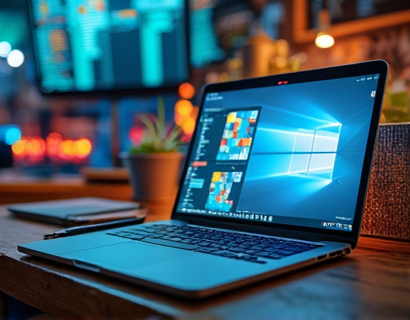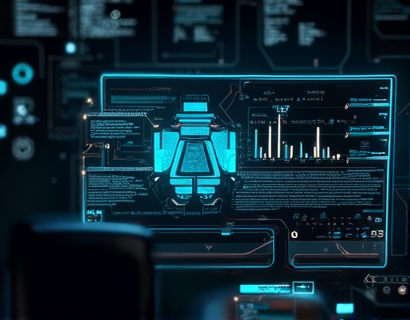Decentralized File Management: Revolutionizing Business Collaboration
In the digital age, efficient and secure file management has become a cornerstone for business collaboration and productivity. Traditional centralized file management systems often face challenges such as single points of failure, security vulnerabilities, and inefficiencies in access control. A decentralized approach to file management offers a promising solution, providing a robust, secure, and efficient platform for teams to collaborate. This article delves into the benefits and workings of decentralized file management, highlighting how it can transform the way businesses handle their critical information.
Understanding Decentralized File Management
Decentralized file management refers to a system where files and data are distributed across a network of nodes rather than being stored in a central server. This architecture eliminates the need for a single point of control, making the system more resilient to failures and cyber attacks. Each node in the network has a copy of the data or a portion of it, ensuring redundancy and availability. This decentralized structure not only enhances security but also improves performance by reducing latency and increasing data access speed.
Key Benefits of Decentralized File Management
The shift to decentralized file management brings numerous advantages to businesses and teams. One of the most significant benefits is enhanced security. In a decentralized system, data is not stored in a single location, making it harder for hackers to target and breach. Even if one node is compromised, the rest of the network remains intact, ensuring that critical information remains secure. This distributed nature also means that there is no single point of failure, reducing the risk of data loss due to server downtime or hardware failure.
Another key advantage is improved collaboration. Decentralized platforms allow multiple users to access and work on files simultaneously without the need for complex permission settings or version control issues. This real-time collaboration capability streamlines workflows and boosts productivity, as team members can seamlessly share and update files without the delays associated with traditional centralized systems. The user-friendly interface of these platforms ensures that even those with minimal technical expertise can navigate and utilize the system effectively.
Decentralization and Data Sovereignty
Data sovereignty is a critical concern for businesses, especially those operating across multiple jurisdictions with varying data protection regulations. Decentralized file management addresses this by giving organizations control over where their data is stored and how it is managed. Since data is distributed across a network of nodes, businesses can choose to store their data in regions that comply with local laws and regulations. This level of control not only ensures compliance but also builds trust with clients and partners who value data privacy.
Technological Foundations of Decentralized File Management
The technology behind decentralized file management is rooted in blockchain and peer-to-peer (P2P) networking. Blockchain provides a secure and transparent way to manage data transactions, ensuring that all changes to the file system are recorded and verified. This immutable ledger enhances trust and accountability within the network. P2P networking, on the other hand, allows nodes to communicate directly with each other, reducing reliance on central servers and improving overall network efficiency.
Smart contracts can also play a role in automating file access and sharing processes. These self-executing contracts with the terms directly written into code can enforce access controls and permissions, ensuring that only authorized users can view or modify files. This automation reduces the administrative burden and minimizes the risk of human error, further enhancing the security and efficiency of the file management system.
User Experience and Interface
A crucial factor in the adoption of decentralized file management solutions is the user experience. These platforms are designed with a focus on ease of use, ensuring that users can quickly adapt and benefit from the system. The interface is intuitive, with clear navigation and straightforward workflows. Users can easily upload, share, and manage files without needing extensive technical knowledge. The platform often includes features such as search functionality, tagging, and version history, making it simple to locate and track changes to files.
To further enhance usability, many decentralized file management platforms offer mobile applications, allowing users to access and manage files on the go. This flexibility is essential for modern teams that operate remotely or have members in different locations. The mobile apps are designed to provide a seamless experience, mirroring the desktop interface and ensuring that users can stay productive regardless of their location.
Scalability and Performance
Scalability is another significant advantage of decentralized file management systems. As businesses grow and the volume of data increases, traditional centralized systems often struggle to maintain performance. Decentralized platforms, however, are built to scale horizontally by adding more nodes to the network. This scalability ensures that the system can handle growing data volumes without a drop in performance. The distributed nature of the network also means that data can be processed and accessed from multiple points, reducing bottlenecks and improving overall efficiency.
Performance is further enhanced by caching mechanisms and data replication. Nodes can cache frequently accessed files, reducing the need to fetch data from multiple sources and speeding up access times. Data replication ensures that critical files are available on multiple nodes, further enhancing availability and reducing latency.
Case Studies and Real-World Applications
Several organizations across various industries have successfully implemented decentralized file management solutions, reaping the benefits of enhanced security, collaboration, and efficiency. For instance, a global software development company adopted a decentralized file management system to streamline its development workflow. The team reported a significant reduction in file sharing delays and a decrease in the incidence of data breaches. The ability to collaborate in real-time on code repositories and project files led to faster development cycles and higher quality outputs.
In the healthcare sector, a network of hospitals implemented a decentralized platform to manage patient records and medical research data. The system ensured compliance with stringent data protection regulations while providing secure and efficient access to critical information. Medical professionals could collaborate on patient care plans and research studies in real-time, leading to improved patient outcomes and accelerated research progress.
Challenges and Considerations
While the benefits of decentralized file management are clear, there are also challenges and considerations that organizations should be aware of. One of the primary concerns is the initial setup and migration of existing data to a decentralized system. This process can be complex and resource-intensive, requiring careful planning and execution. Organizations should consider partnering with experts who specialize in decentralized solutions to ensure a smooth transition.
Another consideration is the need for user education and training. Since decentralized systems operate differently from traditional centralized solutions, users must be trained to navigate the new interface and understand the underlying principles of decentralization. Providing comprehensive training and support can help overcome this challenge and ensure that users fully leverage the system's capabilities.
Network latency can also be a factor, especially for nodes located in different geographic regions. However, advancements in network technology and the strategic placement of nodes can mitigate this issue. Additionally, the decentralized nature of the system means that there may be variations in performance depending on the number of active nodes and their capabilities. Organizations should monitor network performance and adjust as necessary to maintain optimal efficiency.
Future Trends in Decentralized File Management
The future of decentralized file management is promising, with several trends shaping its evolution. One such trend is the integration of artificial intelligence (AI) and machine learning (ML) to enhance the functionality of these platforms. AI can be used to predict and optimize data access patterns, further reducing latency and improving performance. ML algorithms can also help in automating routine tasks, such as data backup and security monitoring, freeing up IT resources for more strategic initiatives.
Another trend is the development of interoperable decentralized platforms that can seamlessly integrate with existing systems and other decentralized networks. This interoperability will enable organizations to leverage the benefits of decentralized file management without disrupting their current workflows. Standards and protocols are being developed to facilitate this integration, ensuring a smooth transition for businesses looking to adopt decentralized solutions.
Privacy-enhancing technologies, such as zero-knowledge proofs and homomorphic encryption, are also being incorporated into decentralized file management systems. These technologies allow for secure data processing and analysis without revealing sensitive information, further enhancing the privacy and security of the data.
Conclusion
Decentralized file management represents a significant shift in how businesses and teams handle their critical information. By offering enhanced security, improved collaboration, and greater control over data, these systems are poised to redefine the future of file management. While there are challenges to consider, the benefits far outweigh the drawbacks, making decentralized solutions an attractive option for organizations looking to streamline their information management processes. As technology continues to evolve, the adoption of decentralized file management is likely to grow, driving innovation and efficiency in the business world.











































